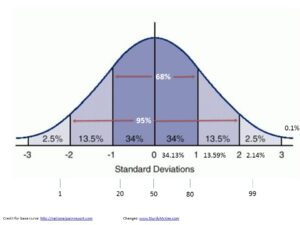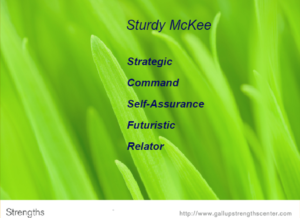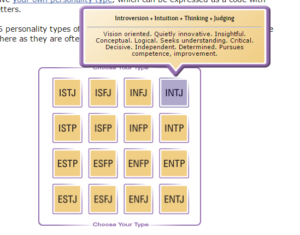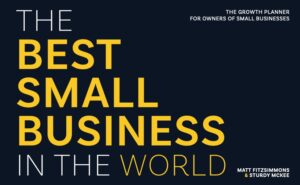This question was posted to a FB group I belong to:
Hi team, I am in process of hiring and was made aware of Aptitude test and IQ test for the potential candidates…however I am not sure where should I direct them to take these tests….Also wondering if it’s better for me myself to take these tests and know myself better.. any thoughts and suggestions are welcomed. Thanks
I got tagged to answer.
Here’s my immediate response:
You guys ask the best questions! (aka the hardest)
Stay tuned.
I will do my best to address this tomorrow afternoon, probably evening for most of you…
Pacific time!
Following is my more thoughtful follow up response.
I’m going to put IQ tests aside, as they are problematic for a number of reasons, and I’m not sure relevant to this discussion.
When thinking about “aptitude” tests, my opinion is that it is really important to first define and articulate your objective. What do you want to achieve? What’s the point of the test? What are you trying to screen for?
When hiring, it is best practice to look for cultural fit, and fit with your core values. You want someone inspired by your vision and core purpose. These people will do more, help more and achieve more. They will be working for a cause, in addition to a pay check. We see this in a number of companies and industries, Zappos, 3M, Apple, and Nike to name a few. You can ask questions directed at learning about people’s values and how they align with those of your company. Scenarios often work well to assess this. This cultural and values fit is primary and is referenced in this A-Player video.
These people will do more, help more and achieve more. They will be working for a cause, in addition to a pay check.
The reason cultural and values fit is primary is that you can teach skills. Sometimes that is relatively simple, like how to answer the phone. Sometimes it is more difficult, like assessing and treating the upper Cervical Spine. But skills can generally be transferred, values less so.
The potential for skill acquisition may be the “aptitude” you are asking about. So, if you do a task assessment as part of the interview, or during a second interview, you can both assess skills and the potential for ongoing skill acquisition, AKA learning. An example of this is interview 2 for a physical therapist, a full patient evaluation. Generally people will “act” through the first 5-10 minutes of the process, but then settle in to their usual habits. They will stop “performing”. You can learn a great deal about their thought processes, patient handling skills, communication skills, clinical skills and reasoning, and even their personality. You could throw in an objection from the “patient” to see how the candidate handles it. You could also teach them something while giving feedback at the end of the interview, and have them repeat back to you in order to see if they are receptive to feedback and have the potential to acquire the skills being taught.
This can be applied to every position. What is it that they do? What are the key job duties and accountabilities? Can you create a scenario and have them demonstrate their ability to perform in alignment with the things you feel are important? Can you incorporate some feedback and teaching into the “assessment”? Your creativity is the only limit here.
But skill acquisition is also dependent on a person’s strengths. Ken Kesey is rumored to have talked about the quality of the Merry Pranksters’ bus trips and the relevance of having the right people on the bus, and in the right seats. Jim  Collins uses this analogy in Good To Great and applies it to businesses. Having a variety of strengths represented, and in the “right seats”, can make your business stronger. Leveraging and playing to each individual’s strengths, and filling in the gaps with new hires, might be a strategy you want to pursue.
Collins uses this analogy in Good To Great and applies it to businesses. Having a variety of strengths represented, and in the “right seats”, can make your business stronger. Leveraging and playing to each individual’s strengths, and filling in the gaps with new hires, might be a strategy you want to pursue.
This is why I like Gallup’s Clifton StrengthsFinder. I follow the concept that we should play to, and work on, developing our strengths in order to pursue and achieve excellence. Working on our weaknesses will lead to achievement of normalcy or mediocrity. I’m trying to find places  where I can be at the edge of the bell curve, not move a little to the middle right. And I want to do the same for my team. So, if I’m hiring for sales, I may want “Woo” (love meeting new people & winning them over), and “Positivity” (enthusiasm that is contagious, upbeat & can get others excited) among the candidate’s top 5 strengths on their Strengths Finders Assessment. For my operations director, I want strengths in the “Executing” and “Relationship Building” categories. It depends on what I am
where I can be at the edge of the bell curve, not move a little to the middle right. And I want to do the same for my team. So, if I’m hiring for sales, I may want “Woo” (love meeting new people & winning them over), and “Positivity” (enthusiasm that is contagious, upbeat & can get others excited) among the candidate’s top 5 strengths on their Strengths Finders Assessment. For my operations director, I want strengths in the “Executing” and “Relationship Building” categories. It depends on what I am  hiring for. You can even create certificates for each team member as well as a grid with
hiring for. You can even create certificates for each team member as well as a grid with
everyone’s strengths so your team can look to those who are strong in a specific area when they need help.
My Strengths are listed here. I share this because it helped me understand myself better and what to focus on.
Another profiling tool is DISC, which stands for Dominance, Influence, Submission, and Compliance. Tony Robbins happens to be offering it for free on his website right now at https://www.tonyrobbins.com/disc/. DISC is billed as a personality assessment. A critical component of that is communication styles. Understanding the way different people on your team, and potential candidates, think and prefer to communicate can be very helpful in understanding and managing your team members. The self-awareness it provides is also a big plus, not only for your team members, but I have found it very valuable for myself personally, as well.
More detailed information specific to DISC can be read here. I am a high D on DISC.
There has been a good deal of research lately around the Myers-Briggs Type Indicator® or MBTI® test. In the MBTI® there are 16 distinct personality types. But the research is showing limited efficacy of use in hiring, though I lean a little to side of it is likely misunderstood and being misused. Among the misunderstandings is that on each of the 4 parameters, the ranking is analog, not digital. In other words, the Introversion-Extroversion parameter is not a binary, but a range where someone may be more or less introverted while being on  that side of the center line. So, interpretation can be rather complex. In addition, more than one personality type may lend itself to a certain type of job or role. I get concerned that using this in hiring, versus to understand the personality attributes of your team members, is prone to errors in interpretation and prone to admission of our own biases into the process.
that side of the center line. So, interpretation can be rather complex. In addition, more than one personality type may lend itself to a certain type of job or role. I get concerned that using this in hiring, versus to understand the personality attributes of your team members, is prone to errors in interpretation and prone to admission of our own biases into the process.
You can read more about the MBTI® here. I am an INTJ on the MBTI®.
I hope this is helpful and provides some ideas and tools that you may wish to include in your hiring processes.
Please comment on this post and ask questions. A discussion and experience sharing from others reading this could be very useful.
Please also share this with your friends and colleagues who might benefit.
Photo Credit: wolfgangsvault.com

